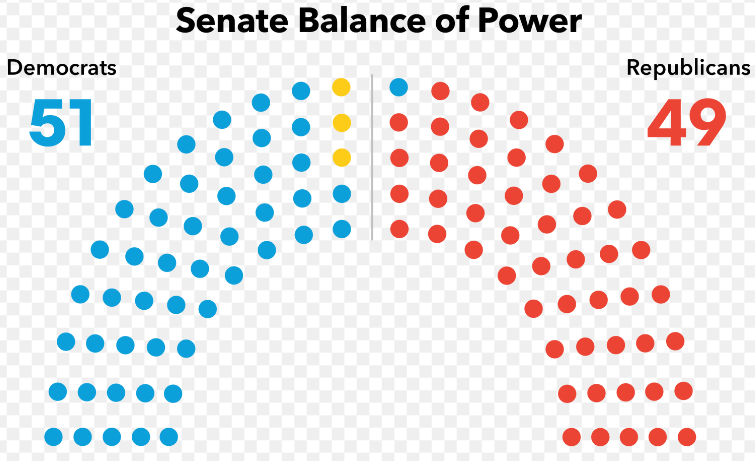Table of Contents

Title: “Decoding the 2024 U.S. Senate Elections: A Comprehensive Analysis of the 34 Senate Seats at Stake”
Introduction:
The landscape of the United States Senate is poised for a transformative shift in 2024, with 34 Senate seats up for grabs. As the nation gears up for this pivotal election, it becomes imperative to delve into the intricate details surrounding the candidates, parties, and the potential impact on the balance of power in the Senate. This comprehensive analysis aims to provide a thorough understanding of the 2024 U.S. Senate seats elections, shedding light on the current distribution of seats, key battlegrounds, and the significance of the upcoming special elections in Nebraska and California.
“2024 Democratic Presidential Contenders: A Comprehensive Guide to the Top 10 Candidates”
Body:
- Overview of the 2024 U.S. Senate Elections:
The U.S. Senate elections in 2024 will see a total of 34 Senate seats in contention, marking a critical juncture in American politics. The significance of these elections lies not only in the sheer number of seats but also in the potential to reshape the dynamics of the Senate for the 119th Congress. As voters across the nation prepare to cast their ballots, the balance of power between Republicans, Democrats, and independents hangs in the balance.
- Current Distribution of Senate Seats:
Understanding the present composition of the Senate is crucial in gauging the stakes of the 2024 elections. As of now, Republicans hold 10 seats, Democrats occupy 20, and three independents align with the Democratic caucus. This intricate balance underscores the competitive nature of the upcoming elections, with both major parties vying for control. An in-depth analysis of the individual seats and the political landscapes in each state provides valuable insights into the potential outcomes.
- Special Elections in Nebraska and California:
The 2024 Senate elections include two special contests in Nebraska and California, adding an extra layer of complexity to the electoral landscape. Nebraska, a traditionally conservative state, and California, a Democratic stronghold, present unique challenges and opportunities for both parties. Exploring the candidates, local issues, and the broader political climate in these states is crucial in predicting the outcome of these special elections and their impact on the overall Senate composition.
- Key Battlegrounds and Contested Seats :
A closer look at the key battleground states and contested Senate seats provides a comprehensive understanding of the electoral dynamics at play. States with closely contested races, including those currently held by either party and those identified as potential upsets, will play a decisive role in shaping the future Senate. Examining the candidates, polling data, and the prevailing political climate in each battleground state is essential to gauge the potential shifts in power.
- Impact on the Balance of Power :
The ultimate outcome of the 2024 Senate elections will determine the balance of power in the Senate for the 119th Congress. Whether there will be a shift in control, a continuation of the status quo, or a potential power-sharing scenario will significantly influence the legislative agenda and the ability of the elected government to enact policies. This section explores the potential scenarios and the implications of each outcome on the functioning of the Senate.
Overview of the 2024 U.S. Senate Elections:
The 2024 U.S. Senate elections mark a critical juncture in American politics, with 34 Senate seats in contention. This significant number reflects not only the routine electoral cycle but also the potential for substantial shifts in the balance of power. As voters prepare to exercise their democratic rights, the focus on the Senate becomes paramount. The composition of the Senate holds vast implications for the legislative agenda, confirming or challenging the policies put forth by the executive branch. The stakes are high, and the outcome of these elections could redefine the political landscape for the 119th Congress.
Current Distribution of Senate Seats:
A crucial starting point in understanding the 2024 Senate elections is a grasp of the current distribution of seats. Republicans currently hold 10 seats, Democrats maintain 20, and three independents align with the Democratic caucus. This intricate balance underscores the competitive nature of the upcoming elections, with both major parties eager to secure or defend seats. The nuanced dynamics within individual states will play a pivotal role in determining the final composition of the Senate, making each race a critical piece in the broader puzzle of American governance.
Special Elections in Nebraska and California: Senate seats
Adding an extra layer of complexity to the 2024 Senate elections are the special contests in Nebraska and California. These states, with distinct political identities, present unique challenges and opportunities for both Republicans and Democrats. Nebraska, traditionally a conservative stronghold, offers a chance for the GOP to strengthen its position. Meanwhile, California, a Democratic bastion, provides an opportunity for the Democrats to consolidate their influence. Understanding the intricacies of these special elections involves a careful examination of local issues, candidate profiles, and the broader political sentiments shaping the electoral landscape.
Key Battlegrounds and Contested Seats:
The heartbeat of any election lies in the battleground states and the fiercely contested seats. In the 2024 Senate elections, these states become epicenters of political activity, with candidates and parties vying for supremacy. The battlegrounds encapsulate a mix of traditionally competitive states and those where unexpected upsets might occur. Analyzing the candidates, polling data, and the prevailing political climate in each of these battlegrounds becomes instrumental in predicting potential shifts in power. The outcomes here could significantly impact the overall narrative of the Senate elections.
Impact on the Balance of Power:
Ultimately, the 2024 U.S. Senate elections will have a resounding impact on the balance of power in the Senate for the 119th Congress. Whether there’s a shift in control, a maintenance of the status quo, or a potential power-sharing scenario will shape the legislative landscape for years to come. The elected government’s ability to enact policies, respond to pressing issues, and collaborate across party lines hinges on the configuration of the Senate. As voters engage in this democratic exercise, they participate not only in choosing individual representatives but also in shaping the broader contours of American governance.
Conclusion:
In conclusion, the 2024 U.S. Senate elections hold the promise of reshaping the political landscape, influencing national policies, and determining the course of the 119th Congress. With 34 seats up for grabs, including special elections in pivotal states, the stakes are high for both Republicans and Democrats. As voters engage in this democratic exercise, the nation awaits the unfolding narrative that will shape the future direction of the United States Senate.
